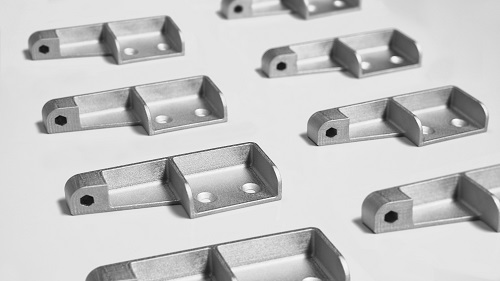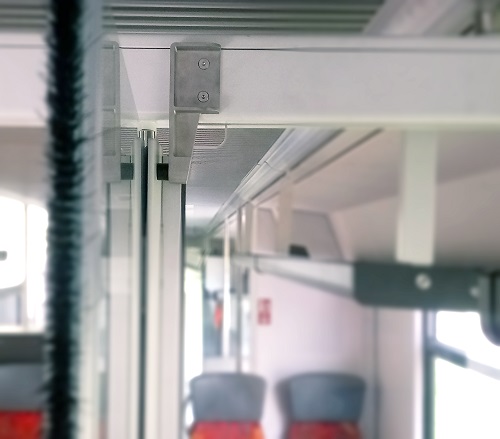How Alsom is realizing the potential of 3D printing
One of the world’s leading manufacruers of and digital mobility is utilizing additive manufacturing to produce production-grade parts.
My first visit to a 3D printing lab was back in the fall of 2014. On a trip to Kentucky, I toured a lab at the University of Louisville, where among other things, a team was working with GE Aerospace to research the feasability of 3D printed parts for jet engines.
At the time, 3D printing, or additive manufacturing, seemed made for commercial aviation. GE Aerospace, Boeing and Airbus don’t make millions of engines or jets in a year; Boeing might only crank out 600 jets, and in a great year GE Aerospace might sell 3,000 jet engines. There are instances where the jet engine or aircraft maker might only need a couple instances of a specific part per jet or engine. What’s more, while they have to support their products for decades, the number of repair parts required in a given year is relatively small and demand is unpredictable. Rather than stock a big inventory of repair parts that just sit on the shelf because of minimum order requirements, 3D printing held the promise of only producing what was needed, when and perhaps even where it was needed. That’s because designs can be digitized and delivered electronically to almost any 3D printer almost anywhere in the world.
Rightly or wrongly, additive manufacturing seemed to be stuck in the place for several years: A promising technology, but still very much a niche application for spare parts or products with low volume or sporadic demand.
Fast forward to 2018, and things appeared to be changing some. Jabil and HP were working together to build a digital network to print production grade parts – not just spare parts – for HP’s 3D printing equipment. The technology still couldn’t compete with injection molding in large quantities, but the gap was narrowing. HP argued that the economic breakeven point – the point at which it was as economical to use 3D printing as injection molding – was then up to 110,000 parts. Beyond that, injection molding was still the way to go.
Just three years later, I published an article from a professor at Duke and a director at Xerox who had developed a framework for determining what parts were suitable to be 3D printed. Still, 7 years after my visit to Louisville, the most common use case identified by the authors was spare parts.
That’s a long buildup to ask the question: So, what’s going on now?
That was the topic of a discussion I had earlier in the fall with Uwe Jurdeczka, a senior expert in additive manufacturing for Alstom, one of the world’s leading manufacturers of high-speed trains, metros, monorails and trams to turnkey systems, services, infrastructure, signaling and digital mobility. Like Boeing, Alstom builds big things in small quantities and then supports them for decades. Hence, the company has a lot of critical and spare parts with low and unpredictable volume.
In 2017, Alstom launched a 3-year research initiative funded in part by the European Union, to learn about additive manufacturing. In this instance, the research was specifically focused on the feasibility of 3D printing metallic parts. “We had used additive manufacturing for some plastic parts inside the train and for some protective parts related to worker safety,” Jurdeczka said. “We wanted to see if we could use additive manufacturing to produce metal parts that would be used inside the train, and not just for spare parts.”
By 2020, Alstom believed it could begin to move forward and reached out to Replique to manufacture the parts. Replique was co-founded by Max Siebert, a former BASF employee, and is part of Chemovator GmbH, BASF’s internal venture builder. Replique “provides a secure digital platform that enables OEMs to provide parts on-demand to their customers through a global and decentralized 3D printing network” of partners that have been vetted by Replique.
According to Jurdeczka, the Alstom team experimented with different parts and two different technologies in order to compare factors such as the cost to make the parts compared to traditional manufacturing methods, the lead time to produce and receive the parts, the total cost of ownership and the impact on the environment. Sustainability is a big part of Alstom’s messaging.
Given the global nature of Alstom’s business and the importance of reliability and safety in the transportation industry, the project moved slowly. Further complicating production is that similar train components might have different requirements for different geographies. A part that works in South Africa may have slightly different specs in Europe. However, by 2020, they had identified several parts as candidates for additive manufacturing. That’s when they reached out to Replique to develop and produce customized, industrial-grade serial parts to be used in the original equipment.
The first part to be qualified and produced was a metal doorstopper used inside train cars. Replique helped Alstom select the material and printing technology, and then qualify and deliver the doorstopper for serial production in just a month and a half. During that period, the Alstom team says that the doorstopper “went through the protocols of initial sample testing and assembly and received the final approval for series production.”

A metal doorstopper was the first part qualified for use inside the trains.
An important component to that development process was getting the parts qualified because of the high safety standards required in the transportation industry. In this instance, the parts had to meet specific fire and smoke regulations. “We have an ecosystem of 7 leading material manufacturers to help select the right materials and provide a network of more than 60 print partners to manufacture polymers and metal parts,” said Max Siebert, Replique’s CEO and co-founder.

The Alstom parts went through a rigorous certification process to ensure that they met safety standards.
Ben Boese, 3D Printing Hub Manager, noted that the company was “able to produce the doorstopper in a cost-neutral manner compared to conventional methods.” He added that Alstom planned to investigate the production of new parts “or even to make them lighter by using reduced infill.”
Jurdeczka said that the parts are functioning well, and lead times for receiving parts are shorter. Because the specifications for a printed part are digital, they can be exported to manufacturing partners that are part of Replique’s network around the world, essentially creating local supply wherever Alstom is doing business. “The conventional way to produce these parts would be to buy sheet metal, bend it, grind it, coat it and then mount it. Now, we order it, we receive a finished part and we are able to torque tighten it to mount it,” Jurdeczka said. He noted that they might only need 30 parts in an order. “With 3D printing, we don’t need safety stock,” he said. “We can order parts in the quantity that we need.” What’s more, parts travel far shorter distances to get delivered – a positive impact on Alstom’s carbon footprint.
Siebert told me that in his experience, Alstom has made great progress in identifying the potential of 3D printing in its operations. “They recognize that they may not need mass production technologies for everything,” he said. “They are realizing a fundamental promise of 3D printing, which is the ability to produce the right number of parts, in the material you want, where you want it anywhere in the world, and to do it securely.”













